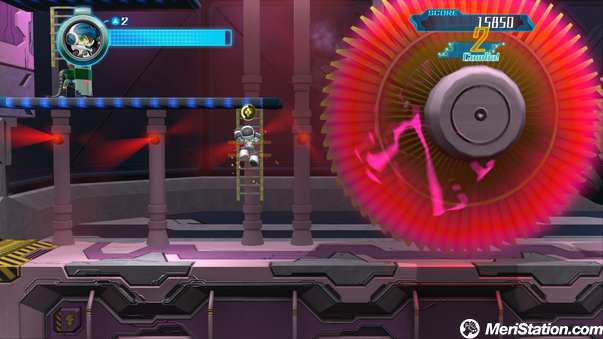Mighty no.9 aimed to be one of the great projects of this almost endless batch of independent and downloadable games that, with the support of users to get ahead, give free rein to the creative freedom of those who propose them. Keiji Inafune, a legend of Japanese
video game design creator, among others, of Mega Man, left Capcom and decided to take a trip of his own. He announced a Kickstarter to re-launch the essence of the legendary bluish character and success reached his arms: four million in revenue to achieve a Mega Man in the XXI century hand in hand with its original creator.
But Mighty no.9 has suffered all kinds of problems, delays and some uncertainty that did not bode well. Finally it is here. It is not the disaster that could appear at a certain point in the development, but it is not even a Mega Man at the height. Not a remarkable action game and 2D platforms.
The story of Mighty no.9 works as a simple excuse to get down to work. For reasons that we do not know there are a series of explosions in the coliseum where the robots compete with each other and Beck, the protagonist, starts to discover what happened.
After this first phase as a tutorial, we went to play the title of Inafune as if it were a classic Mega Man: we have eight locations to go where we must overcome a phase full of enemies and design elements to face a final robot as a great enemy. If we defeat him, we will adopt his transformation to be able to use it in combat.
The controls respond to what we can expect from the Capcom saga. We have a button to jump and another to shoot in a straight line, nothing to be able to point to different directions. We also have the typical dash to go under some platforms. To this we add
more current mechanics such as being able to climb through certain projections or the other faces of the dash: to be able to move at full speed, use it when
we jump to quickly project ourselves through the air and overcome huge empty spaces without firm ground, etc. We will have a bar to spend each of the transformations and we will be regenerated by a shield that gives us vitality if we press the specific button when we need it.
And here we find one of the problems that the game has. The dash has an excessive prominence and that affects negatively on two important fronts.
On the one hand, it is something uncontrollable and certain movements will desperate us in several moments when we have to do several dashes at the same time; on the other hand, the magic of Mega Man and its level design is broken. You just need to try the Legacy Collection to remember how the first installment had a simple on-screen layout. Each enemy had its raison d’être at its specific point on the map, and if we wanted to get past it,
we ended up taking damage and falling into the hole of the turn. Here, the dash is a constant escape route that we can use and abuse how much we want. We jump, we start doing it in the air and we are overcoming enemies. Some will hit us,
You could say that “but this does not want to be a Mega Man clone at the playable level”. And accepting that premise, the answer is that without entering into comparisons, simply offering it is not satisfactory. The game invites to run because we have score for doing it on one side and also because there are several very uninspired levels. The design is far from the
works created by Inafune, with no disposal of enemies minimally thought. Many times it will seem that they are set to be easily eliminated, absorbed (that gives points) and keep moving forward. And precisely here lies his big mistake: the enemies must be placed
with the goal of eliminating us, the players, not to be our easy target. We will seldom find an enemy that can kill us, something unthinkable if we review what this Mighty wanted to be.

